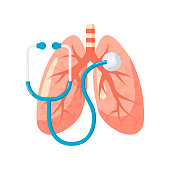Bronchoprovocation Challenge Testing

Basically,Bronchoprovocation Challenge Testing assists asthma healthcare providers make a diagnosis of asthma. Generally, you will inhale a nebulized solution or preform exercise to see if you develop symptoms of asthma or airflow obstruction measured by spirometry. If you develop either, your airways are hyperresponsive.
That is when your asthma healthcare provider may challenge you with the followings:-
- Methacholine (parasympathomimetic drug (trademark Mecholyl) that stimulates secretions and smooth muscle activity)
- Histamine (Histamine is an organic nitrogen compound involved in local immune responses as well as regulating physiological function in the gut and acting as a neurotransmitter. Histamine triggers the inflammatory response.)
- Cold Air
- Exercise
- FEV1 greater 80% of predicted= normal
- FEV1 60% to 79% of predicted = Mild obstruction
- FEV1 40% to 59% of predicted = Moderate obstruction
- FEV1 less than 40% of predicted = Severe obstruction
- Moderate (FEV1 <60% predicted) or severe (FEV1 of < 50% of predicted) airway obstruction
- A Heart Attack in the last three months
- Uncontrolled Hypertension (systolic > 200 mm Hg or diastolic > 100 mm Hg)
- Aortic aneurysm (a localized, abnormal and persistent dilation of a section of the aorta. This usually results from a weakness in the vessel wall. If severe enough, rupture of the aorta with severe hemorrhage is a potential hazard.A bulge in an artery caused by weakening of the artery wall.)
- Pregnant or nursing mothers
- Myasthenia Gravis [a chronic progressive disease characterized by chronic fatigue and muscular weakness (especially in the face and neck); caused by a deficiency of acetylcholine at the neuromuscular junctions]
Bronchoprovocation Challenge:-
1) Asthma healthcare providers will order bronchoprovocation testing if you have symptoms that suggest asthma, but normal to spirometry testing and no response to rescue medications.
2) And obstruction of airflow in your lungs can be provoked by inhaling aerosols known to aggravate asthma symptoms and cause airway narrowing and irritation.
Bronchoprovocation Testing:-
It begins by inhaling a nebulized aerosol as if you were taking a normal breathing treatment. The nebulizer treatments will be repeated at specific time interval increments. A spirometry test will be done before and after each nebulizer treatment, and your asthma care provider will look at the decrease in FEV1.
Bronchoprovocation Testing Results:-
A drop in FEV1* of 20% from your baseline reading is considered a positive test. If your asthma care provider suspects asthma, you may be started on an asthma treatment.
FEV1* is how much air you can breathe out in one second. It measures the flow of air in the large airways of the lung and is a measure of how healthy your lungs are. An FEV1 test is usually performed either in your doctor’s office or in a pulmonary function test lab.
For instance, your FEV1 may be 80% of predicted based on your height, weight, and race. FEV1 is a marker for the degree of obstruction with your asthma.
Hyperresponsiveness (- is abnormal sensitivity or over reactivity to sensory input.) reliably discriminates between patients with asthma from patients without asthma. Bronchoprovocation testing has a high negative predictive value. Therefore, if you have a negative test, it is unlikely you have asthma.
Who Takes Bronchoprovocation Challenge Testing ?
Not all should take bronchoprovocation challenge testing because there is a danger it may lead to a potentially severe asthma attack. If you have any of the following below you need to discuss with your asthma medical healthcare providers whether or not testing is suitable for you.

Comments
Post a Comment